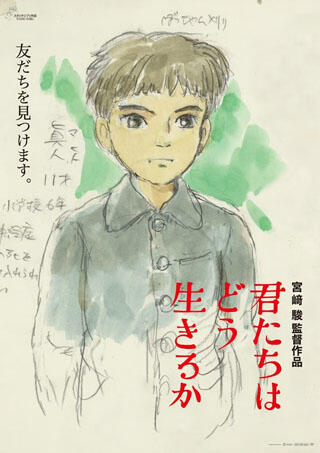Movie Review
-
Embracing Change: A Review of Miyazaki’s “The Boy and The Heron”
In a world filled with diverse opinions, I wanted to share my perspective on Hayao Miyazaki’s latest animated gem, “The Boy and The Heron.” I know there are plenty of reviews out there, each offering a unique viewpoint. Here, I simply want to express what I think in my own words.

Credit poster: Studio Ghibli Japan Having immersed myself in most of Miyazaki’s films, I’ve come to appreciate his ability to convey profound messages through captivating animation. Whether I fully grasp his intentions is a mystery, but isn’t that the beauty of art? It’s open to interpretation.
Among the enchanting tales, my heart has found resonance in films like “From Up on Poppy Hill,” “Howl’s Moving Castle,” and the timeless “My Neighbor Totoro.” These favourites have, in a way, become my windows into Miyazaki’s world, each carrying a piece of his storytelling magic.
So, armed with these cinematic experiences and genuine curiosity, let’s delve into “The Boy and The Heron,” a new chapter in Miyazaki’s storytelling odyssey.
In “The Boy and The Heron”, Miyazaki artfully explores the inevitable passage of time, the acceptance of change, and the bittersweet beauty of saying goodbye.
The protagonist, Mahito, embodies the film’s central theme, forced to confront loss and navigate the unstoppable force of change. Miyazaki’s storytelling prowess shines as Mahito grapples with the aching sense of nostalgia, reflecting on moments of the past that shape his present and future.
At the heart of the narrative is the enigmatic character of the granduncle, a guardian of the past’s legacy, driven by the belief that the future must carry forth the responsibility of protecting it. However, Miyazaki skillfully weaves a tale where Mahito resists the granduncle’s intention to pass on this burden, signalling a departure from the past and an acceptance of change as an inherent part of life.
The film introduces the symbolic Heron, a dynamic character that catalyzes Mahito’s journey into the past. Initially persuading Mahito to explore his history, the Heron takes on a transformative role, changing its motive and ultimately aiding Mahito in returning to the present. This avian guide becomes a multifaceted symbol, representing guidance, reflection, and the ever-changing nature of life.
What sets “The Boy and The Heron” apart is its ability to evoke a profound emotional response, urging audiences to reflect on their relationships with the past and the inevitability of change. The refusal of Mahito to inherit the granduncle’s legacy becomes a powerful statement—a declaration that one must move forward, embracing the scars and uncertainties that accompany change.
In true Miyazaki fashion, the film encourages viewers to appreciate the beauty of impermanence and the strength that comes from letting go. The Heron, a symbolic representation of nature and the cyclical nature of life is a powerful metaphor throughout the narrative.
As Mahito and the Heron soar into the future, Miyazaki’s latest creation becomes a timeless reminder that, in the face of change, there is beauty in the journey, and sometimes, saying goodbye is the first step towards a new and unexpected adventure.